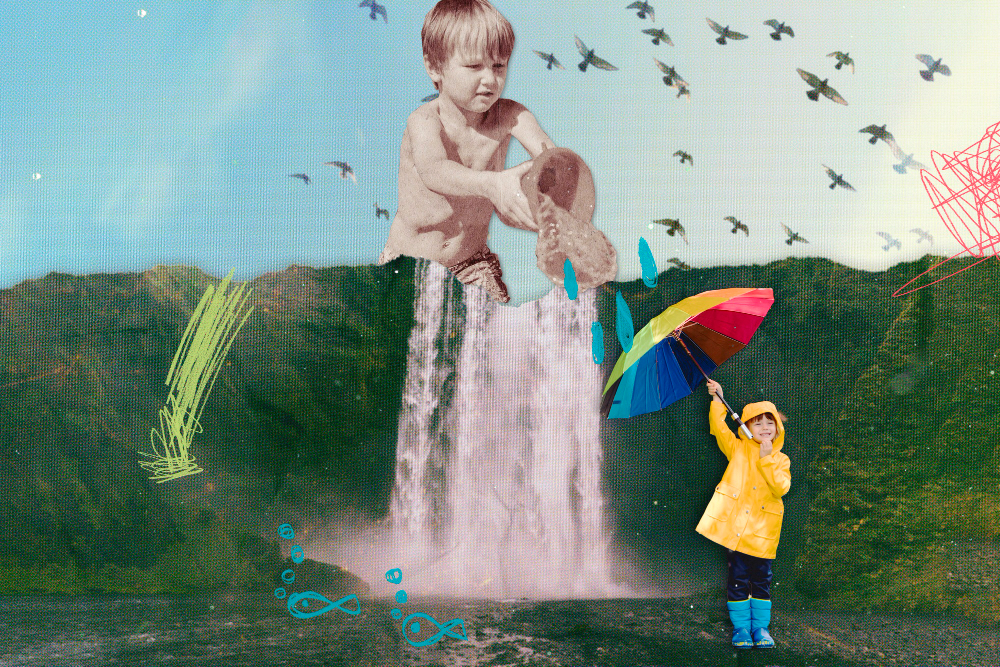Your Accessibility Committee is a collection of essays written during and participation in a school district’s accessibility committee: a process branded as collaborative, but engineered for control. This series explores institutional betrayal, process theatre, and the architecture of performative inclusion. It’s a record of what happens when access is promised but the implementation falls short—and what it costs to keep showing up anyway.
You cannot ask for collaboration after the structure has been built. If the goals are fixed, the roles already assigned, the rules already written, then what you are offering is participation. Not partnership.
Participation is not collaboration
Too often, institutions conflate involvement with influence, as though inviting someone into a process late—after the budget is set, the scope is written, and the outcomes are already defined—is the same as partnering with them in the work. They offer space to speak but not space to shape. They host sessions and surveys and “stakeholder engagements” where the container has already been built without us, and where our input is framed as valuable so long as it does not challenge the design.
They tell us we are collaborators, when what they really mean is: you may speak here, if you stay within the boundaries we have drawn, so we can extract your truth, in the manner we choose.
This is the illusion of collaboration. It is performative, extractive, and disorienting—especially for people who have entered the space in good faith, believing that their experience and insight might change something real. What is offered as openness quickly reveals itself to be constraint. And the moment you try to name the boundary—try to reshape the process, question the premise, or propose a different frame—you are marked as difficult, disruptive, or off-topic. Because what was called collaboration was never meant to bend.
You cannot co-build what has already been decided
Collaboration requires shared authorship. That means the goals, the timeline, the process design, and the core definitions must all be open to shaping by the people most affected. If you’ve already defined success, we cannot collaborate. If you’ve already chosen the tools, the team, the method, we cannot collaborate. If you’re only asking what we think of your proposal—after it’s been designed, reviewed, approved, and polished—we are not collaborating. We are reacting to what you built without us.
And when people have lived through systemic harm—when the process is meant to address exclusion, injustice, or institutional betrayal—this distinction matters even more. Because the very first step in any repair is humility: the willingness to let those most harmed shape the terms of the conversation. To tell you what matters, in what order, and why. To co-create the structure itself.
Without that step, everything that follows will echo with erasure.
The design of the process is the message
You cannot undo harm if your repair replicates the conditions that caused it.
And the number one way institutions replicate harm is by designing inaccessible, top-down processes and calling them inclusive.
Just a PArent
When you decide the format, set the timeline, and name the deliverables before involving community, you communicate clearly—whether you intend to or not—that power remains with you. You say, We want your voice, but not your direction. We want your story, but not your demands. We want your input, but not your leadership.
The structure speaks louder than the invitation.
Real collaboration redistributes power
True collaboration means giving up control—not all of it, but enough that the process is no longer entirely yours. It means being prepared to change course. It means naming your constraints and asking the group whether those constraints are legitimate. It means allowing the people in the room to redefine the goal, rewrite the timeline, reshape the roles, and remake the map. It means being accountable for the process, without dominating it. It means recognising that no amount of facilitation can substitute for consent.
And yes, it will be slower. Yes, it will be messier. Yes, it will raise questions you had hoped to avoid. But it will also produce something else: legitimacy. Integrity. Buy-in that is not coerced. And the possibility of trust.
Trust cannot be built on pre-written conclusions
When you ask people to collaborate but do not show them how their words changed the outcome, you break trust. When you produce a report that smooths over the hard things, or one that quotes selectively, or one that summarises without accountability, you are not collaborating—you are extracting. You are mining people’s pain for institutional credibility. You are building a public narrative of inclusion while privately clinging to control.
Real collaboration means naming who decided what—and who was invited to decide it. It means documenting disagreements, not just consensus. It means giving people a chance to correct the record before you publish it. And it means being willing to hear: This doesn’t work. We want to start again.
Begin with readiness, not performance
You do not need to begin with a polished agenda. You do not need to promise transformation by the end of the quarter. But you do need to begin with honesty. You need to name what has already been decided and what is truly open. You need to invite people into the real work—not just the front end of it. And you need to be willing to slow down, make space, and sit with the discomfort of having your process rewritten by the people who were never meant to lead it.
Because that is what collaboration really means.
And if you are not ready for that, then you are not ready for us.

Your Accessibility Committee
A collection of essays written during and after my participation in a school district’s accessibility committee: a process branded as collaborative, but engineered for control. This series explores institutional betrayal, process theatre, and the architecture of performative inclusion. It’s a record of what happens when access is promised but the implementation falls short—and what it costs to keep showing up anyway.







